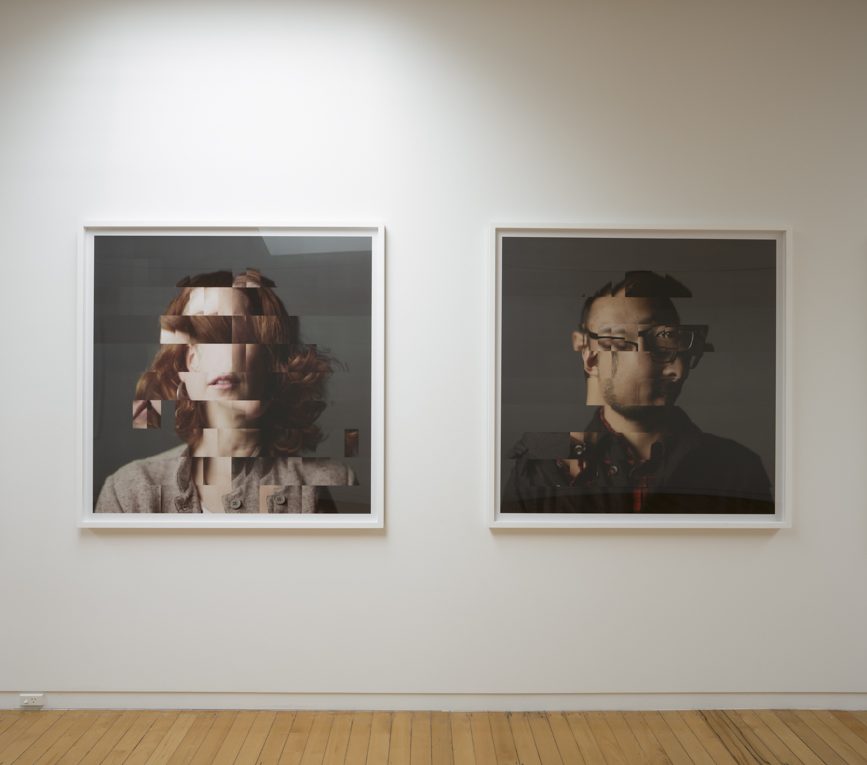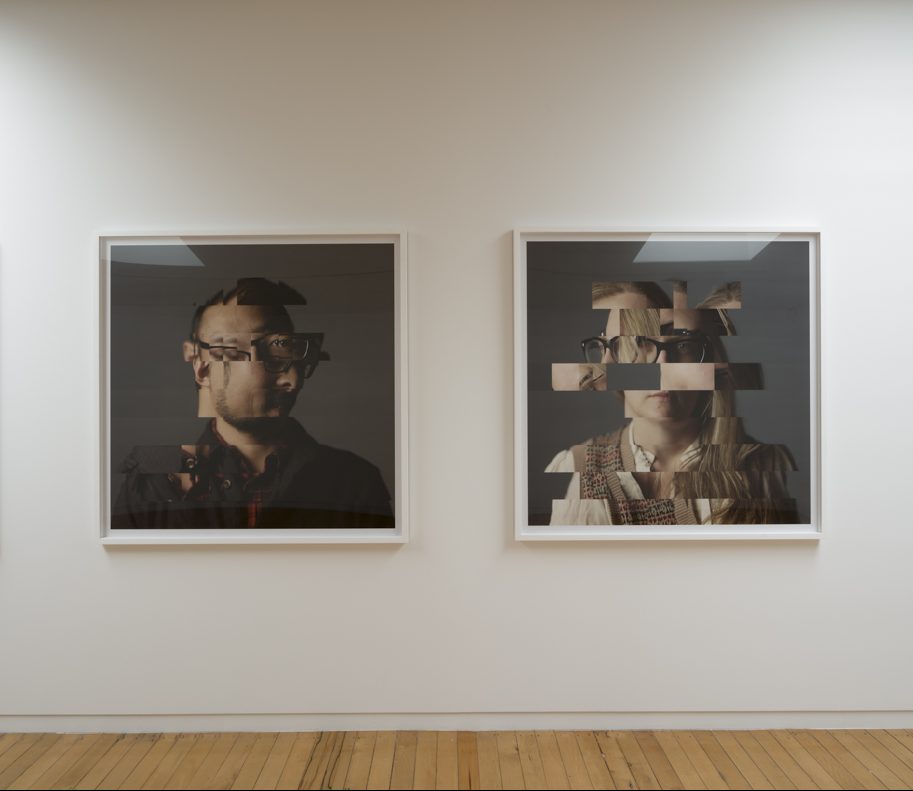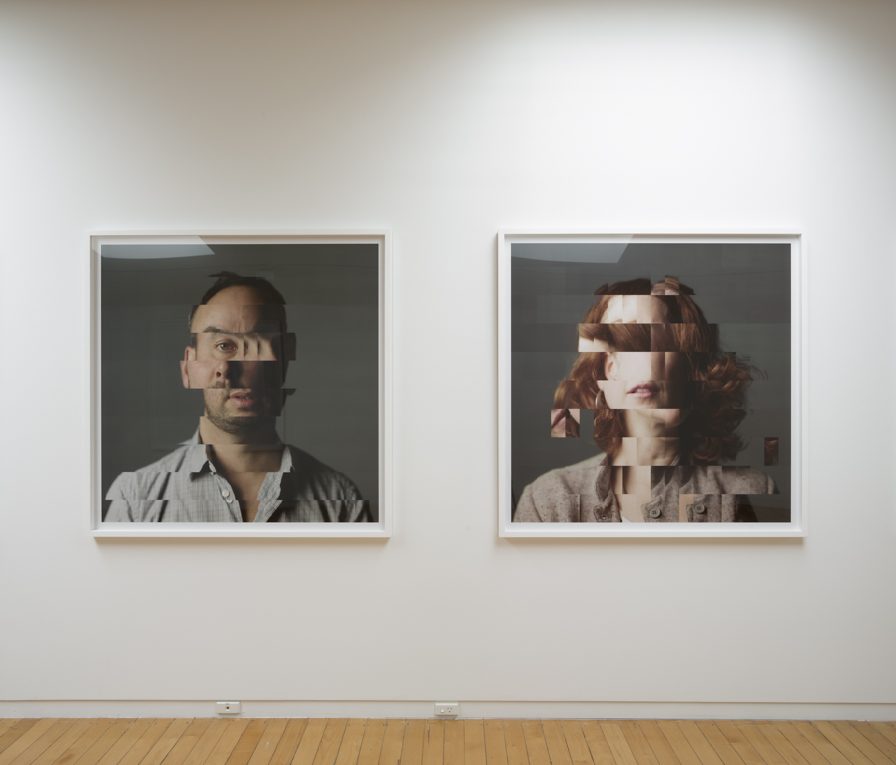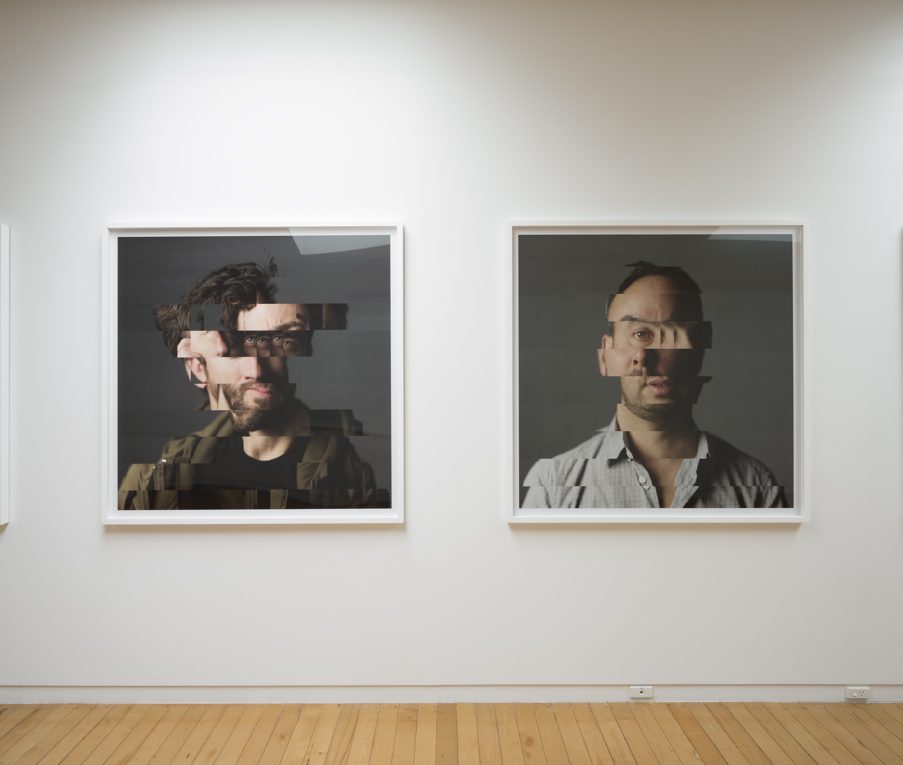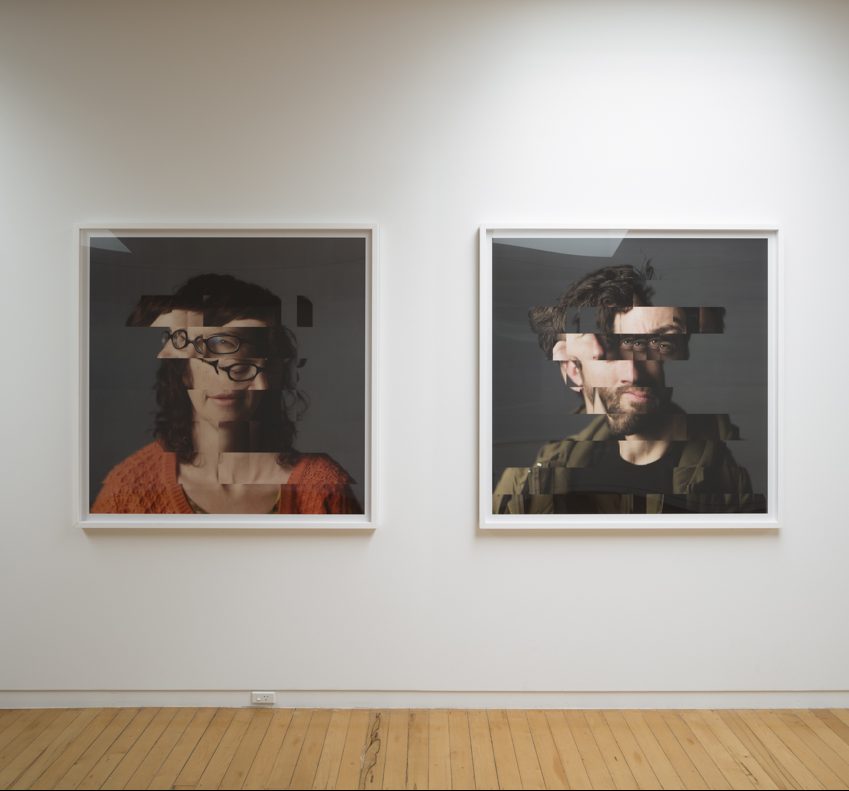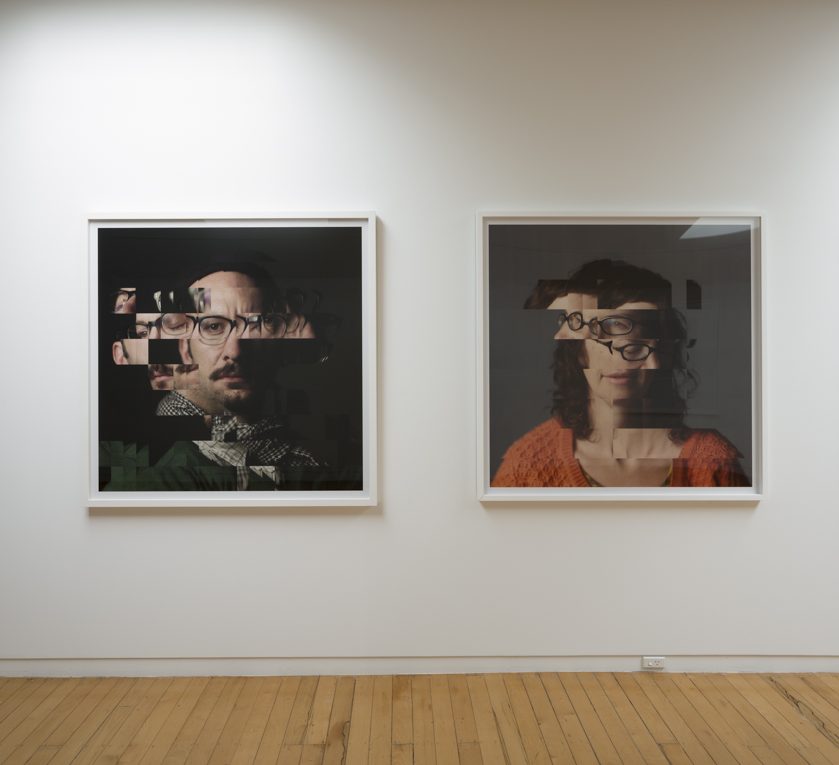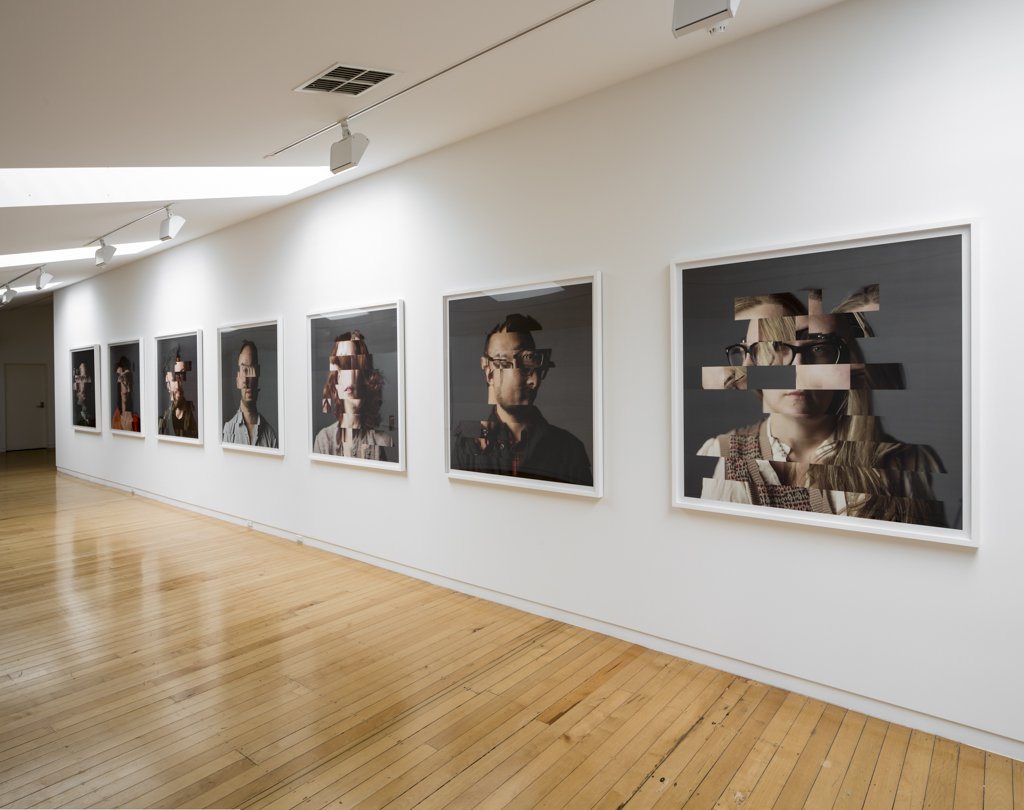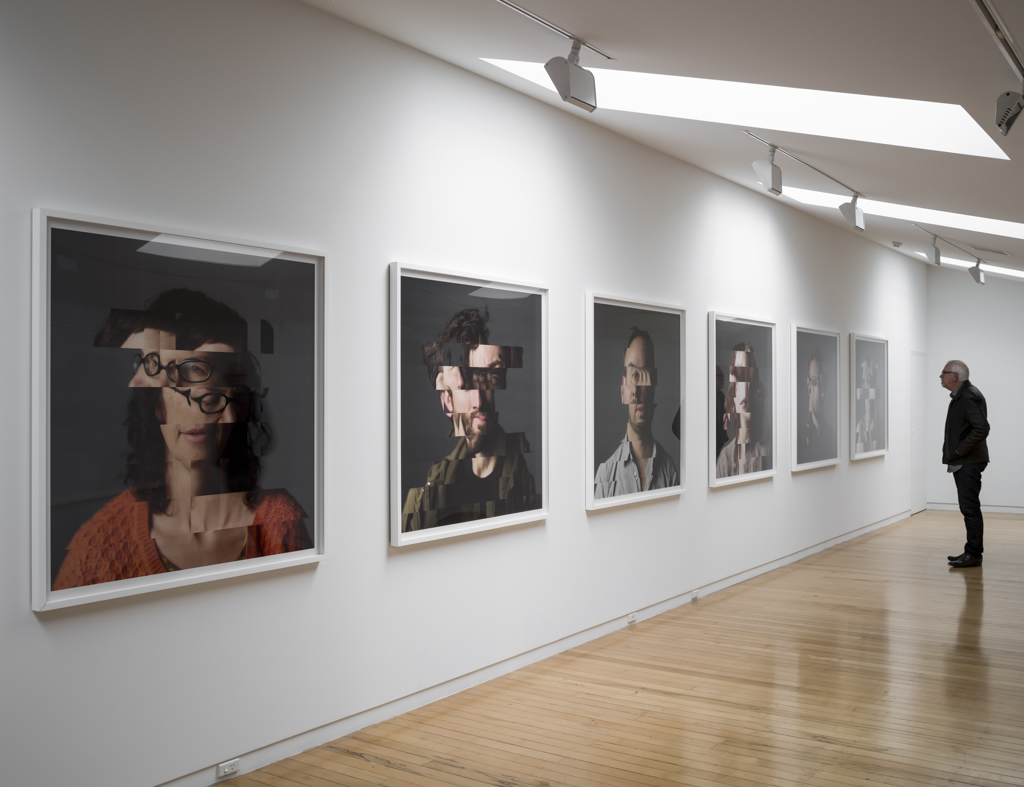Daniel Crooks
remapping
24 May - 7 July 2013
Auckland Festival of Photography 2013
courtesy of Anna Schwartz Gallery
Daniel Crooks’ remapping suggests views of other possible worlds. In video and photography, Crooks records, dissects, and reconfigures sections of lived reality.
Cloud Atlas (fitzroy 1:23) traces the transient, intangible material of the sky. Borrowing the title from David Mitchell’s Booker Prize-nominated novel, the artist attempts to chart physical space by travelling a pre-determined path on the ground by car. Our point-of-view is destabilised by the simple manipulation of the camera shooting directly up, into the sky. Unable to navigate by the roads or street signs, we can only track the artist’s movement by landmarks in the air – bare trees, the roofs of buildings, electricity cables and the recognisable Victorian tower of the Fitzroy Town Hall. Reflecting our attempts to describe and navigate the world with rigid systems, Crooks reminds us that our own realities are constituted through perception.
The Portrait series of photographs articulates the artist’s interest in a temporal rather than a physical image of life. Each work is the study of a single person over a period of about twenty minutes. The video camera is mounted on a ‘robot’ which follows a Hamiltonian path similar to that followed by the artist in Cloud Atlas. It moves around the preset frame of the shot, travelling along a line which draws the vertices of a graph, visiting every point on the graph once only. The camera follows this line, beginning at one point and ending at another, and never crosses a point twice. Reminiscent of Chuck Close’s gridded self-portraits, as well as the surveillance and monitoring technology used in retina scanning, these works do not enter into the personality or ‘essence’ of their subjects, rather, they express the inability of the photographic image to provide a comprehensive, indisputable version of the world. They are both temporal and physical portraits, an indexical trace of the time the artist spent with the subject.
The result of Daniel Crook’s continued fascination with the physical properties of time, remapping is imbued with the rigour of mathematics and the gentle metaphysics of photography and the moving image. Remaining salient is the ‘concrete’ material of these ethereal, destabilising works: all that we view has actually occurred, and was simply documented by the artist. Nothing is cut or removed, only displaced in the sequence of time, enough to now offer a view from the wings of a usually assumed reality.
